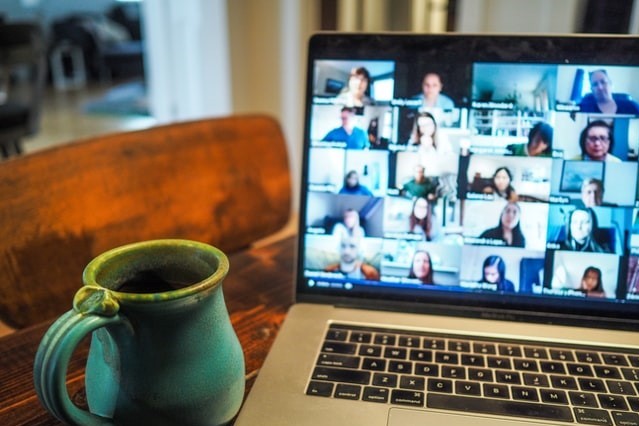Working from Home Doesn’t Replace the Office: It Replaces the Coffee Shop

A great deal of the fear that managers express about the post-2021 workplace is that employees won’t be able to get their work done from home. They continue to regard the real office as the place designed for focus and creativity. That’s certainly a romantic notion.
In the 25 years of working with teams in companies large and small, private and public sectors, never once have I heard anyone point out that their workplace was too quiet. In fact, it was the opposite. It was a place of conversations, meetings, and interruptions — a vibrant social space — one where activity and busy-ness seemed to hold priority over true productivity.
Whether that was intended or not, that’s human nature. We’re instinctively social creatures. It usually wasn’t possible to just keep your head down and focus. People still kept dropping by, quick breaks still turned into lengthy conversations, and more meetings still kept springing up. Those who were able to earn themselves an office with a door quickly found that their open-door policy made it difficult to get privacy even with a physical barrier.
The Coffee Shop Retreat
The best way, it seemed, to avoid the endless interruptions was to run and hide — maybe to an empty boardroom – but that still carried the risk of being found. A better solution was to run to the local coffee shop. That’s often where focused work could get done.
A coffee shop is generally a noisy place, but it’s other peoples’ noise, and that works. It becomes a curtain of anonymous sound. There’s none of your own company politics happening here. A coffee shop might not be a great place for a phone call or a video chat meeting, but it’s an ideal place to get into your own work. In a way, in the years prior to 2021, the coffee shop became a proxy for the home office. It was permissible to some degree because it was physically close to the office, meaning that managers could still get access to you when you returned. It seemed like an extension of the corporate floorspace.
But that corporate floorspace itself was not a place for self-directed focused work. That’s why some people arrived early or stayed late — to get the focused work done when there was no one else around. Why? Because other people meant more distractions. Others took their work home, to get it done more efficiently in — surprise, surprise — their home office, at the kitchen table, or even in bed.
The workplace is a space for socializing. There’s certainly a benefit to spontaneous conversations or to a well-run meeting. But these are social activities, and they can now be just as easily done online, and will become even easier and more intuitive as video chat technologies improve.

Working From Home Resistance
The fear that managers feel about people working from home may instead be the loss of their status quo. They’re used to patrolling their hallways, seeing their employees, and generally running the show. This is the theater of work. Although there are many good managers out there who place their employees’ progress as a priority, the physical, three-dimensionality of the office with its cast of characters, scenes, and props is where the role is played, and that’s difficult to give up.
But any manager, if forced to be truthful about where and how most employees get their best work done, will have to admit the office is not it. That’s why there are so many workplace comedies on TV and so many self-help books on leadership and management available for sale. The true essence of productivity doesn’t thrive in the 20th century collective workplace.
These managers fear change, and that’s normal. It’s human. Change means a situation that’s an unknown commodity, and it’s much more comfortable to stick with the known. But the best antidote to the fear of change is facts. Knowledge. Research. Already, there are great examples of companies that have adopted a far more personalized approach to work-from-home, hybrid, or on-premises-but-substantially-updated. These must be observed and emulated if managers wish to actually keep their teams from drifting away. Managers who fear the change and say no can’t be faulted for the initial fear reaction, but to continue to say no is like doggedly staying put in a beachfront property that now has waves lapping at its foundations.
Maybe, just maybe, the best way for managers to mull over this new challenge would be to go down to the coffee shop, and instead of opening their laptop, just enjoy their coffee and watch what’s happening around them.
This guest post was authored by Steve Prentice
Steve Prentice is an expert in the relationship between humans and technology in the workplace. He is the author of books on time management, stress management, and career management. His new book is The Future of Workplace Fear: How Human Reflex Stands in the Way of Digital Transformation. Learn more at steveprentice.com.
*******
Ms. Career Girl strives to provide valuable insights you can use. To see more from our columnists and guest authors, check these out! Or subscribe to our weekly email featuring our latest articles. We’re also present on Medium!

